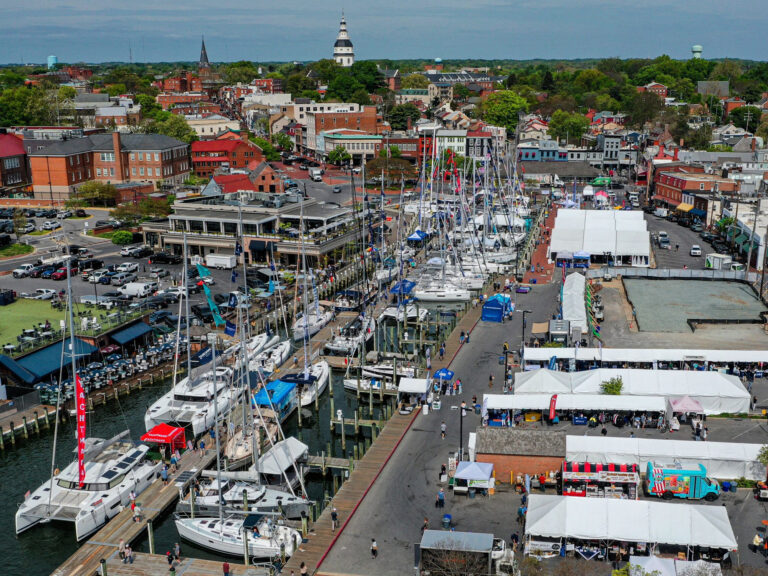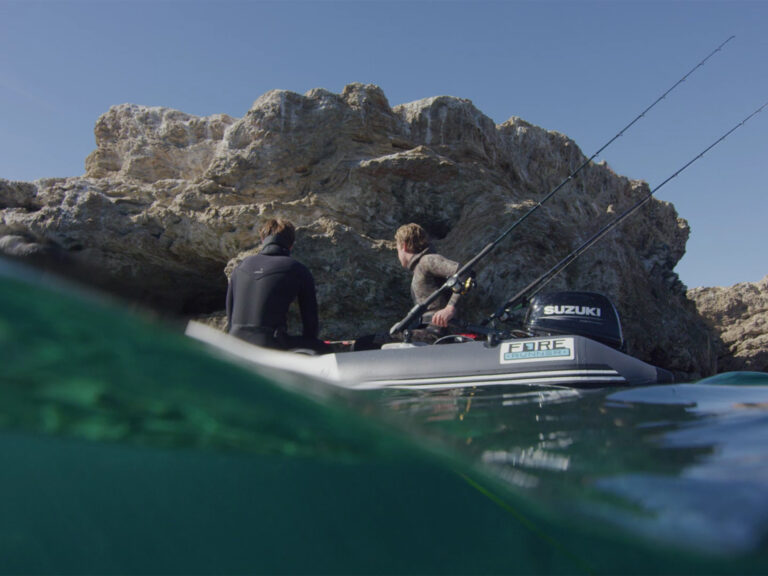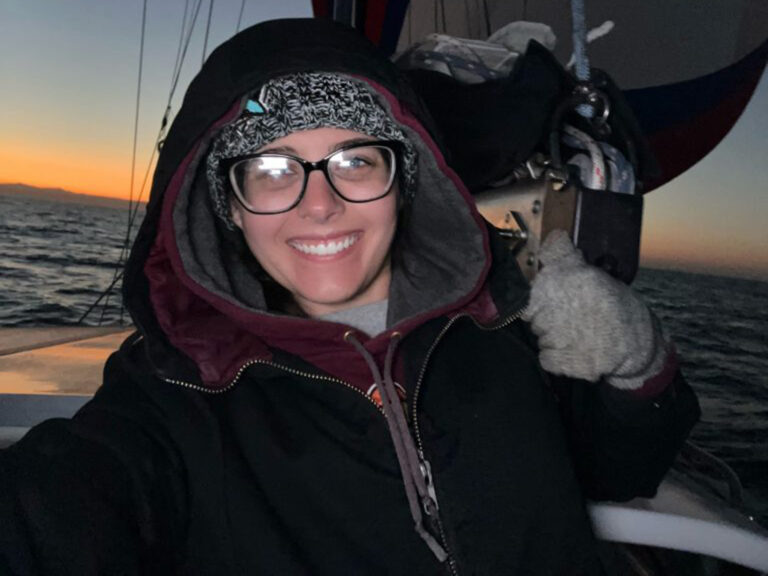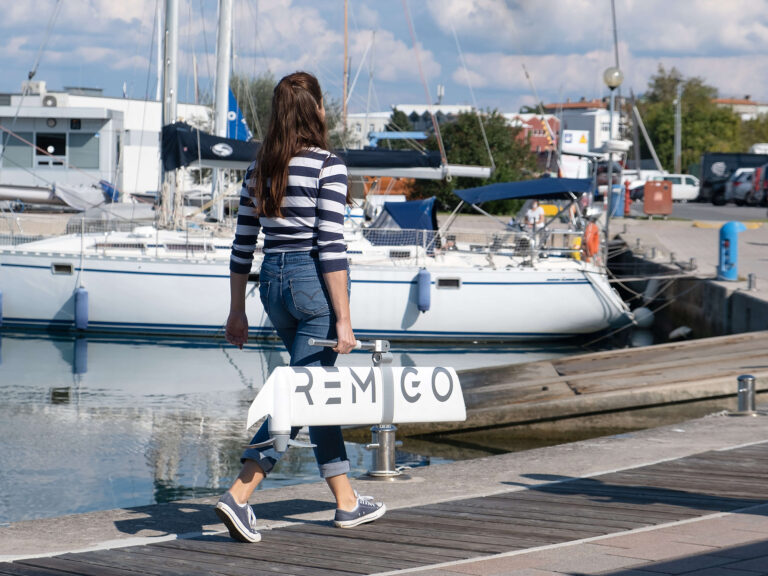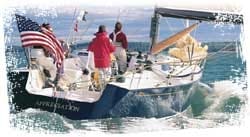
cw_1890_1.jpg
In this story, Part II of a three part series for Caribbean cruisers, I’ll take a closer look at personal gear and safety equipment you’ll want aboard for the passage from the U.S. East Coast to the Caribbean.
Assuming some common sense on the part of the skipper, I’ll focus on things I’ve found most often lacking on supposedly well-equipped boats. Several books, including my own Street’s Cruising Guide to the Eastern Caribbean ($40; 1995; W.W. Norton and Company, www.norton.com) and Jimmy Cornell’s recently published World Cruising Essentials ($30; 2003; International Marine, www.interna tionalmarine.com), cover this subject in more detail.
Crew comfort is paramount on any passage. Sure, you’re heading to the warmth of the Caribbean, but you’ll likely be leaving the United States in the fall, when cold fronts begin their eastward march across the continent. One of the coldest nights I’ve ever experienced at sea was in late spring-the first night of the 1955 Bermuda race as crew on Huey Long’s beautiful 53-foot wooden yawl, Ondine. Few of the crew realized how cold it would be the first night. After all, we were going to sunny Bermuda. On deck, we nearly froze, and belowdecks was no better, as we had no way to heat the boat. The lesson learned applies in spades to the fall passages.
On another occasion, I was spared the chill of an early October snow by a Shipmate coal-fired stove aboard the boat we were taking south. If you have a coal stove, stock up on good, hard (blue) anthracite coal when you get the chance. The soft brown stuff that you find in ports farther south doesn’t work nearly as well. If you have a diesel heater, this will keep the boat warm, even if it doesn’t dry it out. For more about heating options, see “Smoke Gets in Your Eyes” (October 2001).
If you don’t have heating aboard, try an old trick I picked up in the U.S. Navy. Buy enough flowerpots to put one upside down over each of your stove burners, held in place by pot holders. Turn the stove on, and the flowerpots will do a surprisingly good job of warming the cabin. Of course, there are more conventional ways to cope with the cold, the wet, and the other challenges you can expect.
Personal Gear
The traditional migration to the Caribbean from the northeastern United States begins mid-October to early November. In November, until you get out across the Gulf Stream, the temperature offshore will vary from cold to absolutely frigid. Even during the summer, the cold Labrador Current that sweeps along the New England coast can make the first days of passage from Newport, Rhode Island, to Bermuda very cold at night. The crew that’s not equipped for cold weather is useless. It’s the skipper’s responsibility to inspect the entire crew’s gear and make sure they’re properly equipped for cold, wet weather.
Clothing: Competitors in Around Alone and other high-latitude sailors swear by thermal underwear made of Polartec or other synthetic fabrics that wick moisture from the body while keeping it warm. Being an old salt who’s set in his ways, I still prefer high-quality wool for the layers of clothes under my foul-weather gear. I’ve yet to find a material that works better than high-quality woven wool or wool fleece. Cotton is freezing cold while wet, so denim jeans or cotton tracksuits won’t do you a bit of good in cold weather. For pants, I recommend wool trousers. You can often find some good, inexpensive wool pants at Army-Navy surplus stores. I found some one-size-fits-all pants that the French navy issued; the wool was so thick that the pants practically stood up by themselves. Get a good wool shirt, some soft wool long johns, plenty of wool socks, wool mittens, and at least two wool watch caps.
A fleece or soft wool balaclava will keep your head, face, and neck warm, but be sure to get one made of fine fibers that isn’t itchy. Remember, keeping your extremities warm goes a long way toward preventing heat loss.
Foul-weather jackets, safety harnesses, and life vests: If the foul-weather jacket has no built-in safety harness, the harness often gets forgotten in the rush to get on deck. Then the crew is running around on deck-usually in an emergency- without a harness. My ideal solution would be a foul-weather jacket with a harness and flotation built in, but only a few manufacturers make these. Instead, most major brands provide foul-weather jackets with attachment points for the harness and life vest (either zip-in flotation liners or inflatable vests), which keep these three items together as a unit. US Sailing (401-683-0800, www. ussailing.org) compared several brands of harnesses in a 1999 study, and the results are posted at its website. If you have inflatable life vests, ensure that you and your crew are completely familiar with their operation and re-arming, that you check that the CO2 cartridges are up to date, and that you follow the manufacturer’s recommendations for periodic inspections.
Foul-weather pants: Although chest-high bibs are fine on a man, many women find waist-high trousers more functional and comfortable. However, if you do spend some time on the foredeck, then the chest-high varieties are a better option.
Seaboots: Today, most seaboot manufacturers make fairly short seaboots, their cuffs being 9 or 10 inches off the deck. For heavy-weather work, you want seaboots that are 16 inches high, which are hard to find. Rubber boots and wet socks inevitably lead to smelly feet, which is why I prefer breathable yet watertight boots. My favorites are all-leather boots with Gore-tex liners by Dubarry (www.dubarryna.com), an Irish company. They’re expensive (about $250), but they’re well worth it.
Seasickness: Samuel Johnson, an 18th-century British social commentator famous for his dictionary of English, wrote: “To cure seasickness, find a good big oak tree and wrap your arms around it.” If only it were that easy. At sea, different remedies work for different people, so stock a variety of treatments. If I’m feeling queasy, a glass of red wine and I’m fine. However, once someone else becomes seasick, any such oral remedy is bound to come back up again.
The most reliable remedies I know are suppositories, such as Compazine and Tigan, used to combat nausea in postoperative patients. Aboard Iolaire, we’ve used Compazine for years, and it’s been 100-percent effective.
Emergency Gear
Life-raft inspection: Contact the manufacturer of your life raft to obtain a list of its licensed recertification facilities near you. If your raft is approved by the U.S. Coast Guard or SOLAS (Safety of Life at Sea), then your inspection station should be certified by these entities. The United States Marine Safety Association (732-751-0102, www. usmsa.org) provides a list of manufacturers and tips regarding inspections. Be certain that any employees who’ll inspect or repack your life raft are certified by the manufacturer and that all certificates are up-to-date. This isn’t a job to be taken lightly. Try to be present when your life raft is inflated for testing so you can become familiar with its contents and operation.
When having the life raft repacked, I recommend two additions to the emergency supplies. Make sure you have ample seasick suppositories. Even people who don’t normally get seasick can become ill on a raft. Also, have the packer retrofit a sea anchor of the type recommended by the raft manufacturer. This is standard on most SOLAS rafts but not on some American recreational rafts that rely only on ballast pockets to keep the life raft from capsizing. Some manufacturers take a belts-and-suspenders approach and use both ballast pockets and a sea anchor.
406 EPIRB: In an emergency, a 406 EPIRB (emergency position-indicating radio beacon) is designed to relay important information, including your location, to rescuers. Your 406 EPIRB must be registered with the appropriate authorities and routinely tested. You also need to keep your emergency contact abreast of your cruising plans. A U.S. boat should register its 406 EPIRB with the National Oceanic and Atmospheric Administration (NOAA; 888-212-7283, www. noaa.gov), which also publishes guidelines for routine testing. (For more information on 406 EPIRBs and distress alerting, see “Is Anybody Out There?” in the December 2002 CW.) Ideally, you’ll want one 406 EPIRB on board the boat that’s readily accessible and one packed in your life raft.
Distress signals: I don’t think handheld flares are much help except for guiding nearby rescuers to your boat after you’ve been spotted. Likewise, smoke flares are useless except in calm weather; in a breeze, the smoke lays down flat, and rescuers can’t see it from afar. Flares fired from Very pistols go up 300 feet; the Pains Wessex and other parachute rocket flares go up 1,000 feet. Though more costly per pop, the rocket is the way to go. The parachute flare will stay up longer and have a much better chance of being seen. Red is the distress signal, but a white parachute flare provides far more illumination than a red one. For this reason, I also carry white rockets. Were I in a distress situation and trying to get attention, I’d fire a white rocket first, then a red rocket. If a power vessel bears down on you and doesn’t answer your calls on the VHF radio, I believe the white rocket will get that crew’s attention. They also provide good general illumination for similar emergency situations.
Communication: Some boats will want to stay in daily communication with the home office or friends. At sea, you can now do this by single-sideband radio, satellite phone, or ham radio.
Others who go to sea simply want peace and quiet. They want the radio so they can obtain weather reports, not chitchat, so they only need a receiver. It’s worthwhile to have a high-quality all-band receiver that’s capable of receiving on both the upper and lower sideband. This type of receiver is the most versatile, allowing you to eavesdrop on the various ham and SSB frequencies and, with the right software, to receive weatherfaxes via your laptop computer.
GPS navigation: Many sailboats will be heading south with the latest and greatest electronic navigational equipment, gadgets that will do everything, including think for the navigator. We used to go north and south with a sextant and a pocket watch, but modern marine electronics make navigation so much easier today. However, they also instill a dangerous complacency. Don’t let an overreliance on gadgetry diminish your traditional piloting skills or convince you that paper charts are a waste of space. At the very least, you’ll want those charts next month for the final article in this series, when I’ll be discussing routing options on the blue highway south.
Don Street is the author of several books on cruising, including a series of popular Caribbean cruising guides.




